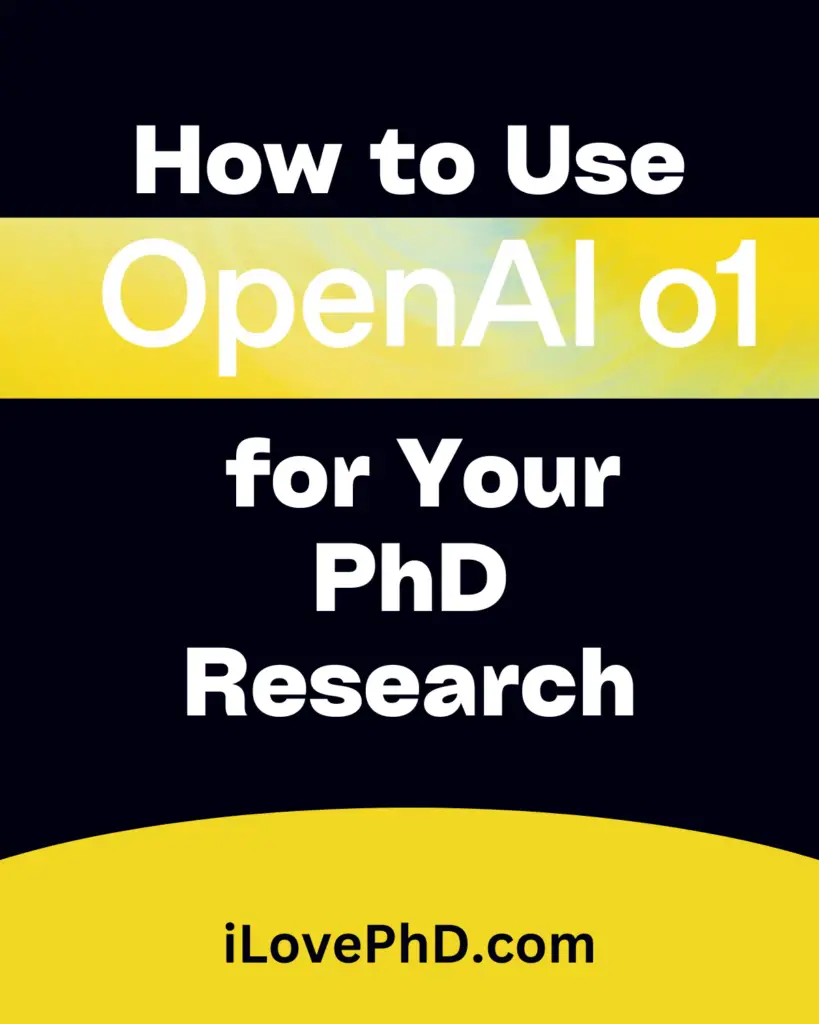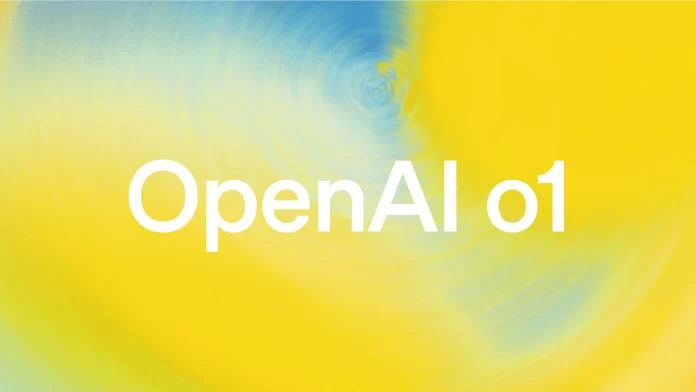In the ever-evolving landscape of artificial intelligence, a new player has emerged that promises to revolutionize how PhD students approach their research. Enter OpenAI o1, a cutting-edge AI model designed to tackle complex problems in science, coding, and mathematics. This article explores how you can leverage OpenAI o1 to supercharge your PhD research and potentially break new ground in your field.
What is OpenAI o1?
OpenAI o1 is the latest in a series of AI models developed by OpenAI, released on September 12, 2024. What sets o1 apart is its enhanced reasoning capabilities, which allow it to spend more time thinking through problems before responding. This approach mimics how humans tackle complex issues, making it an ideal tool for advanced academic research.
Why OpenAI o1 is a Game-Changer for PhD Students
- Advanced Problem-Solving: OpenAI o1 has demonstrated impressive performance in challenging benchmark tasks across physics, chemistry, and biology. It’s reported to perform at a level similar to PhD students in these fields.
- Mathematical Prowess: In a qualifying exam for the International Mathematics Olympiad (IMO), the o1 model scored an astounding 83%, compared to its predecessor GPT-4o’s 13%.
- Coding Capabilities: The model reached the 89th percentile in Codeforces competitions, making it a powerful ally for computational research.
- Interdisciplinary Applications: Whether you’re working on quantum optics or cell sequencing, o1 can generate complex formulas and annotate data with high accuracy.
Practical Applications of OpenAI o1 in PhD Research
1. Literature Review and Hypothesis Generation
Use o1 to analyze vast amounts of research papers quickly, identifying gaps in current knowledge and helping you formulate novel hypotheses.
Also Read: Step-by-Step Guide: How to Use ChatGPT to Write a Literature Review With Prompts
2. Experimental Design
Leverage o1’s reasoning capabilities to design robust experiments, considering variables and potential confounds you might have overlooked.
Also Read What is a Research Design? Importance and Types
3. Data Analysis and Interpretation
Employ o1 to process complex datasets, perform statistical analyses, and offer insights that could lead to breakthrough discoveries.
Also Read: 5 Free Data Analysis and Graph Plotting Software for Thesis
4. Code Optimization
For computational research, use o1-mini (a faster, cheaper version) to debug and optimize your code, potentially saving weeks of troubleshooting.
Also Read: Data Coding in Research Methodology
5. Interdisciplinary Connections
Explore connections between your field and others by asking o1 to draw parallels and suggest novel approaches inspired by different disciplines.
Also Read: Interdisciplinary Research Ideas
Getting Started with OpenAI o1
To begin using OpenAI o1 for your PhD research:
- Access o1 through ChatGPT Plus or Team subscriptions.
- If you’re a developer, check if you qualify for API usage tier 5 to start prototyping.
- Familiarize yourself with the model’s capabilities and limitations.
- Start with small, well-defined tasks and gradually increase complexity.
- Always verify o1’s outputs with your expertise and through peer review.
Ethical Considerations and Best Practices
While OpenAI o1 is a powerful tool, it’s essential to use it responsibly:
- Always credit the use of AI in your research methods.
- Verify all results and don’t rely solely on the AI’s output.
- Be aware of potential biases in the model and address them in your methodology.
- Use o1 as a complement to, not a replacement for, your critical thinking and expertise.
Conclusion
OpenAI o1 represents a significant leap forward in AI-assisted research. By integrating this tool into your PhD work, you can potentially accelerate your progress, uncover new insights, and push the boundaries of your field. As with any powerful tool, the key lies in using it wisely and ethically. Embrace the possibilities that OpenAI o1 offers, but remember that your unique human perspective and rigorous scientific approach remain irreplaceable in the pursuit of knowledge.
Are you ready to take your PhD research to the next level with OpenAI o1? The future of academic discovery is here, and it’s more exciting than ever.
Frequently Asked Questions About OpenAI o1
What is OpenAI o1?
OpenAI o1 is a new series of AI models designed for enhanced reasoning capabilities, particularly in complex fields like science, coding, and mathematics.
When was OpenAI o1 released?
OpenAI o1 was released on September 12, 2024.
How does OpenAI o1 differ from previous AI models?
OpenAI o1 is trained to spend more time thinking through problems before responding, mimicking human-like reasoning processes.
What fields does OpenAI o1 excel in?
OpenAI o1 shows exceptional performance in physics, chemistry, biology, mathematics, and coding.
How does OpenAI o1 perform in mathematics compared to previous models?
In a qualifying exam for the International Mathematics Olympiad (IMO), OpenAI o1 scored 83%, while its predecessor GPT-4o only scored 13%.
What is OpenAI o1-mini?
OpenAI o1-mini is a faster, cheaper version of o1 that is particularly effective at coding tasks.
How can researchers access OpenAI o1?
Researchers can access o1 through ChatGPT Plus and Team subscriptions, with API access available for qualified developers.
What are the current limitations of OpenAI o1?
As an early model, o1 doesn’t yet have features like web browsing or file and image uploading that are available in some other AI models.
How does OpenAI o1 compare to human experts?
In tests, o1 performs similarly to PhD students on challenging benchmark tasks in various scientific fields.
What safety measures are in place for OpenAI o1?
OpenAI has developed a new safety training approach that utilizes the model’s reasoning capabilities to better adhere to safety and alignment guidelines.
Can OpenAI o1 be used for interdisciplinary research?
Yes, o1 is designed to handle complex, interdisciplinary problems and can draw connections between different fields of study.
How does OpenAI o1 perform in coding competitions?
OpenAI o1 reached the 89th percentile in Codeforces competitions, demonstrating high proficiency in coding tasks.
What is the pricing structure for OpenAI o1?
Pricing details are not fully specified in the provided information, but o1-mini is mentioned to be 80% cheaper than the o1-preview.
How often will OpenAI o1 be updated?
OpenAI mentions that they expect regular updates and improvements to the o1 series.
Can OpenAI o1 be used for tasks outside of academic research?
While it excels in academic fields, o1 can potentially be used for any task requiring complex reasoning and problem-solving.
How does OpenAI o1 compare to human performance in specific fields?
The model is reported to perform similarly to PhD students in physics, chemistry, and biology benchmarks.
Is there a free version of OpenAI o1 available?
The information provided mentions plans to bring o1-mini access to all ChatGPT Free users in the future.
How is OpenAI ensuring responsible use of o1?
OpenAI has bolstered its safety work, internal governance, and federal government collaboration, including agreements with U.S. and U.K. AI Safety Institutes.
Can OpenAI o1 generate images or process visual data?
The current information doesn’t mention image generation or visual data processing capabilities for o1.
How does OpenAI o1 fit into the broader landscape of AI development?
OpenAI o1 represents a new approach in AI development, focusing on enhanced reasoning capabilities and potentially setting a new standard for AI performance in complex problem-solving tasks.


